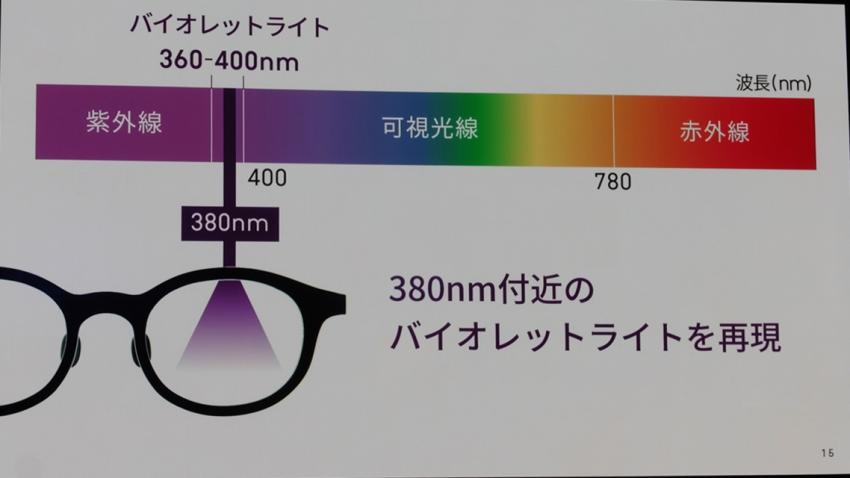Glasses-type device emits violet light to prevent myopia

Jins Holdings Inc aims to apply for the approval of the "glasses-type medical device for prevention of the progress of near-sightedness" in cooperation of Tsubota Laboratory Inc (a venture firm spun off from Keio University).
The glasses-type medical device emits "violet light," which is believed to have an effect of preventing near-sightedness (myopia). Violet light is light having a wavelength of 360-400nm and included in sunlight. Children who do not play much outdoors are exposed to violet light for a shorter time than those who often play outdoors and tend to progress near-sightedness.
The device has lights for emitting violet light on the inner side of the frame, and the lights emit violet light in the same way that the eyes are irradiated with violet light outdoors.
When children become nearsighted, the risk of excessive myopia (becoming extremely shortsighted) increases as they grow. So, Jins plans to develop a glasses-type medical device that is targeted at six to 12 year-old children, who have a high risk of progressing near-sightedness.
The company will start clinical trials for applying for the approval of the device in 2020 or later, aiming to obtain an approval for manufacturing and selling the device in 2022 or later.
Why does violet light prevent myopia?
A research team led by Kazuo Tsubota (president of Tsubota Laboratory and professor of the Department of Ophthalmology, Keio University School of Medicine) found that it is possible to prevent the progress of near-sightedness of myopic chicks and mice by irradiating their eyes with violet light.
As near-sightedness progresses, eye axial length increases. The research team discovered a possibility that violet light activates the "EGR1" gene, which prevents the extension of eye axial length, and prevents the progress of near-sightedness. The team is currently conducting clinical tests for confirming the safety of the method.
